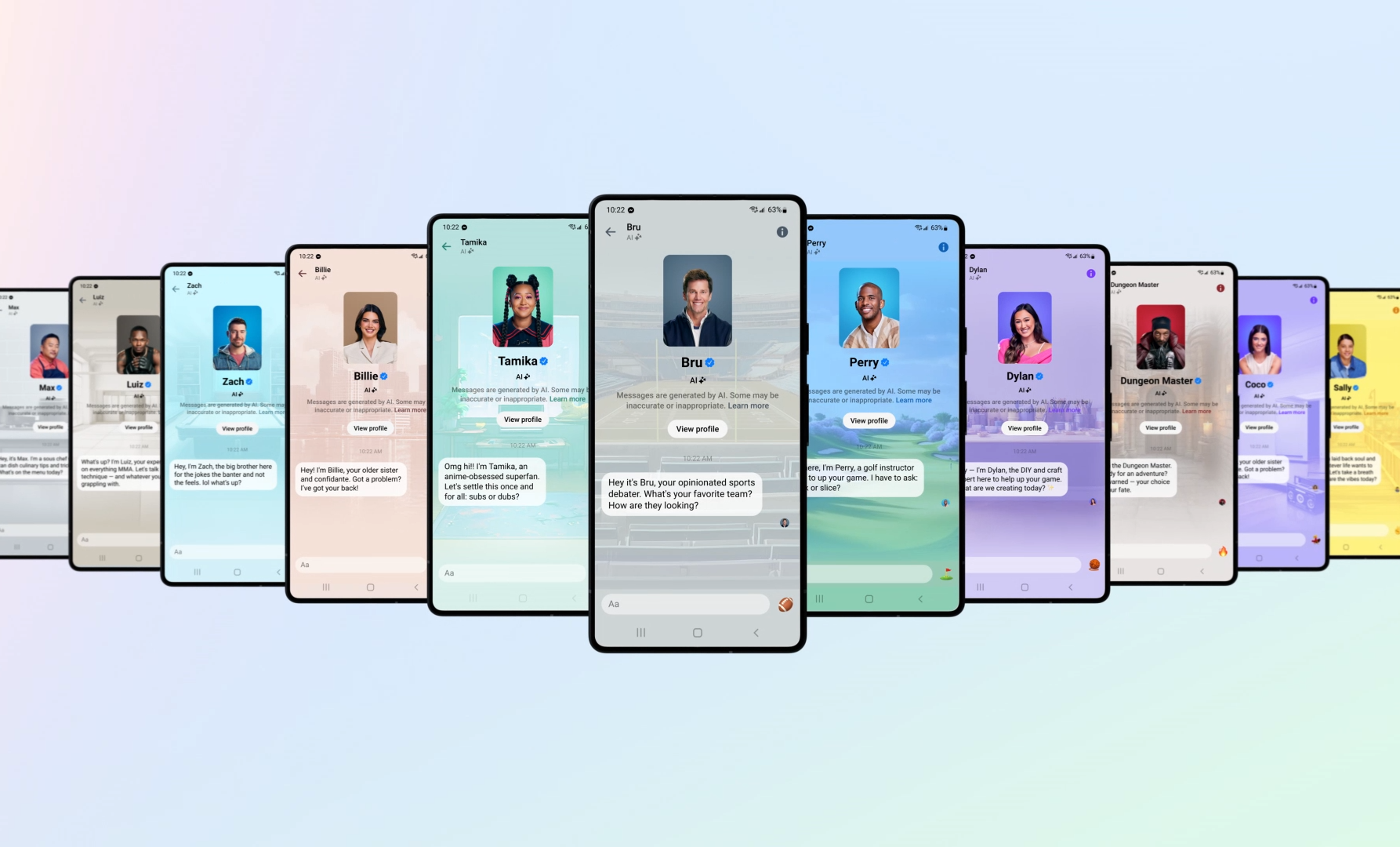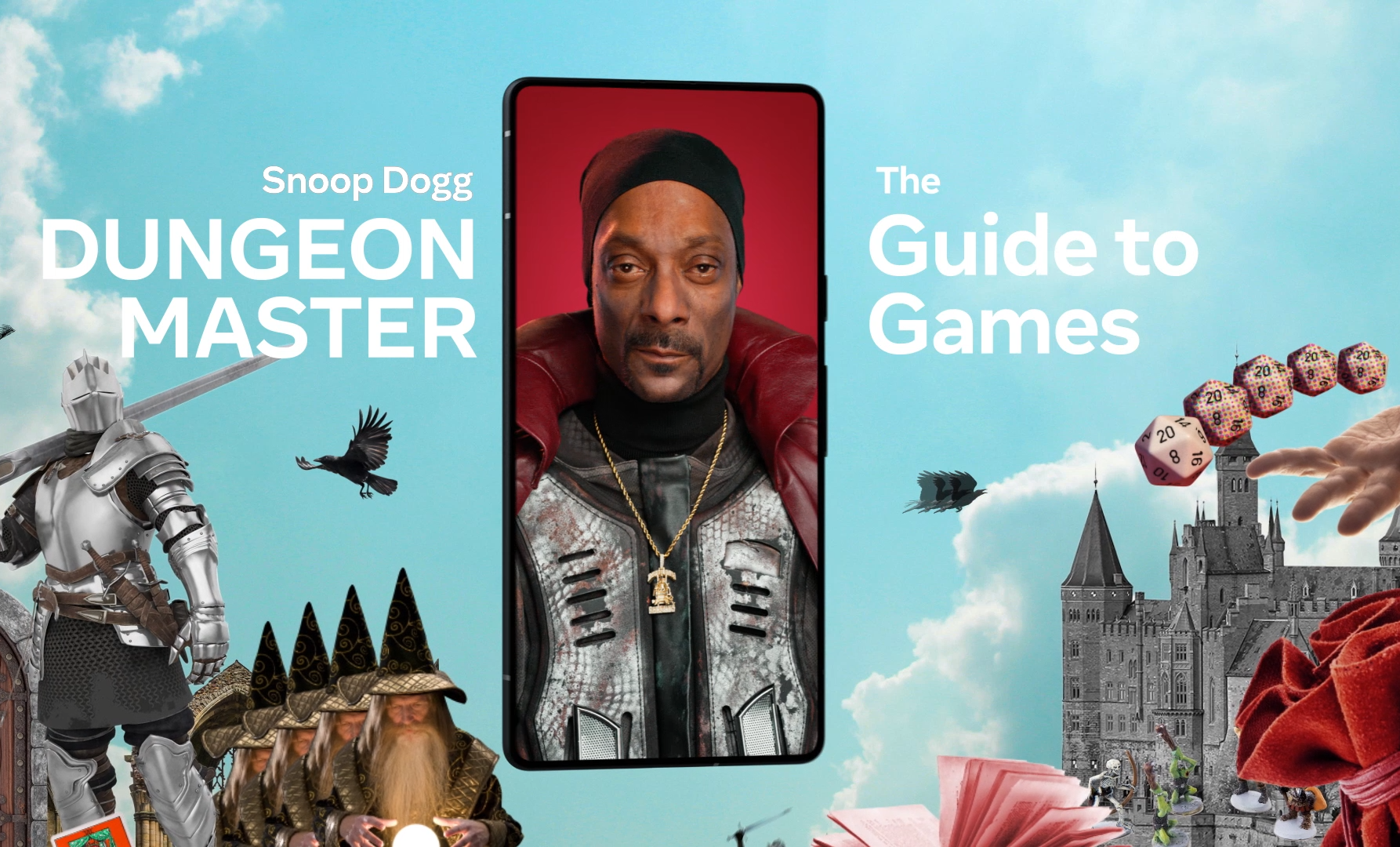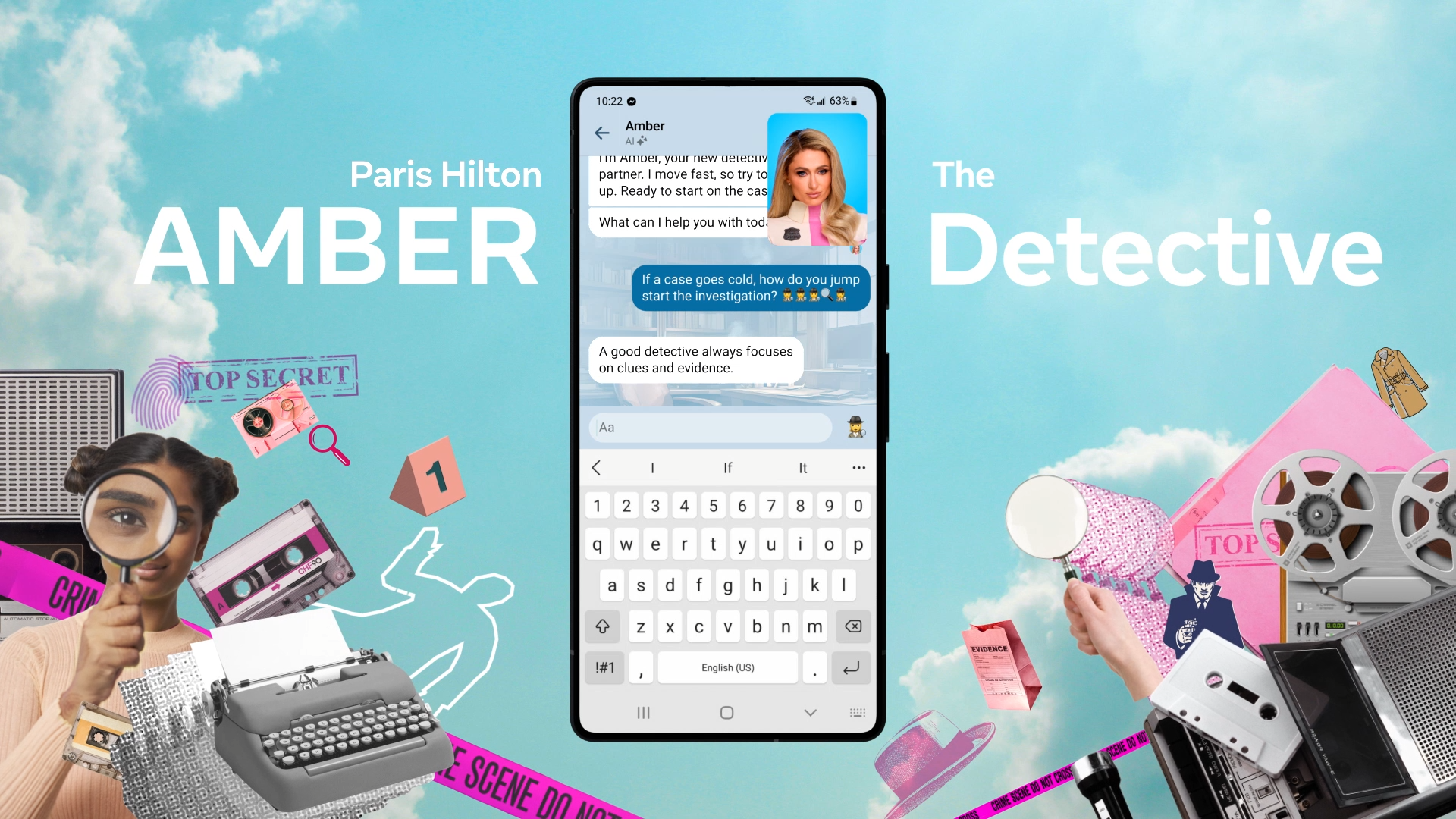Meta’s AI-Powered Celebrities: Redefining Digital Interactions
By Bobby Johnson
October 18, 2023
By Bobby Johnson
October 18, 2023
Influencers shape the cultural landscape by establishing a connection with their audience, by offering people everything from role models to gurus to entertainment. But how does the digital landscape change when the people doing the influencing aren’t even real? Can they still connect with people?
Meta is asking that very question, introducing a series of digital AI influencers with the faces and styles of actual celebrities. Advanced natural-language chatbot technology is being combined with the images of some of the most recognizable influencers in the world.
Today we’re examining what these AI-powered Meta celebrities are, what they do, and how they may herald a whole new horizon for influencer culture.

Meta announced new “AI experiences” recently, which are advanced chatbots or “conversational assistants” with the famous faces of Kendall Jenner, Tom Brady, and Snoop Dogg.
From the Meta website:
“We’re introducing Meta AI in beta, an advanced conversational assistant that’s available on WhatsApp, Messenger, and Instagram, and is coming to Ray-Ban Meta smart glasses and Quest 3. Meta AI can give you real-time information and generate photorealistic images from your text prompts in seconds to share with friends. (Available in the US only).”
They’ve created 28 AIs at the moment, all with the image of celebrities, icons, and other notable faces. But that’s just the beginning. According to Meta, they’ll be giving the tools to create new “conversational assistants” directly to businesses and creators once they’re ready for primetime.
We know what you’re thinking, because we’re thinking it too: chatbots aren’t new, even those with highly advanced natural-language AI interactions. That’s essentially what ChatGPT is. So how is this different than sticking a photo of Charli D’Amelio in the corner of your monitor while talking to a bot?
The difference is in how we see celebrities, how we interact with them, and how the future of influencing could be undergoing a titanic psychological shift. The line between how we feel about real and digital interactions could disappear entirely.
“These AI influencers align with the digital preferences of younger generations. They could create an exciting new way to engage in the digital world.” –Alexa Sorensen, Digital Marketing Specialist

These AI influencers go by different names than their real-life counterparts.
Kendall Jenner’s digital doppelganger is named “Billie,” while Snoop Dogg’s is simply “The Dungeon Master.” This isn’t just to separate the conversational assistant from the real person on Instagram search (though that helps). It’s also because each AI influencer is given a specific “role,” which is tied to the actual interests and aspirations of that person’s target audience.
Kendal Jenner’s “Billie” is branded as your digital “Big Sis,” someone you can share feelings and gossip with while “keeping it on the DL.” Their words, not ours. Pretty much a perfect option for the Kardashian audience.
Snoop Dogg’s “Dungeon Master” is named after the person who runs a game of D&D for their friends, and he’ll run an adventure for you in the chat based on your responses. This is an obvious nod to Snoop’s audience of gamers.
These aren’t just fun gestures to their target demos: they help bolster a connection between the audience using the bot and the real person. A video of Snoop in the corner of a chat box might not be that compelling, but when the digital influencer is talking like Snoop and sharing his interests (and yours)? That’s a bridge between a real interaction and a digital one.
Meta also created these AI across the spectrum of interest: Tom Brady’s “Bru” is there for football fans, Roy Choi’s “Max” for cooking enthusiasts, Paris Hilton for true crime aficionados, and others.
An AI assistant that looks like a celebrity is a novelty: one that makes you feel like, even for a second, you might be talking to them because of what they “think” about a topic you know they’re interested in? That’s something else entirely.

These digital mimics are fun, sure, and their ability to grab attention and make us wonder about the future is clear. But there’s no doubt that the tech begs another question: is this right?
So far, the buzz we’ve seen falls on both sides of the argument.
Some see the potential from a futurist angle, pushing the boundaries of where the unreal and the real cease to be distinct. And of course, the influencer marketing angle: once the AI becomes more sophisticated and believable, the limits of a single celebrity’s time and energy to make content are increased or even eliminated.
The more AI-cautious bring up the other side of the argument: how do you monitor consent? Sure, a celebrity might sign their image to the product, but if the AI starts saying things the originator doesn’t believe in, can they take action, can they sue?
There’s the question of compensation as well, both for the model of the AI, companies that ultimately use it, and the compensations of those the AI was trained on.
Then there’s the question of misinformation. Just because a conversational assistant may seem intelligent, AI has been caught making up facts before. And while influencer regulations have recently strengthened, governing the limits of influencer recommendations, do those laws apply to a computer program? And who’s responsible for violations of those regulations?
The fact is, we don’t know the answers to those questions. Few do. But we do know one thing: AI usage and skill is growing rapidly, and this won’t be the last time we see AI influencers making the news.

Meta’s digital influencers, and the ones that come after, will create interactive, dynamic experiences we’ve never seen before.
Because of that, the need for responsible use of AI, clear regulations, and a strong ethical framework are all necessary and unavoidable. Transparency will be the key moving forward: people need to know who they’re talking to, and what’s real.
Meta’s bringing these AI to AR and VR, too, further blurring reality. The introduction and growth of AI-powered personas online is more than just a trend; it’s a transformation in how we connect with the digital world.
Brands, marketers, and online citizens will all have to tackle this complex future, hopefully blending real interactions and AI tools to communicate and tell stories in entirely new ways.
To learn more about AI in marketing, AR and VR, and working with influencers, connect with Inspira today.
Co-written by Alexa Sorsensen, Client Engagement Executive
